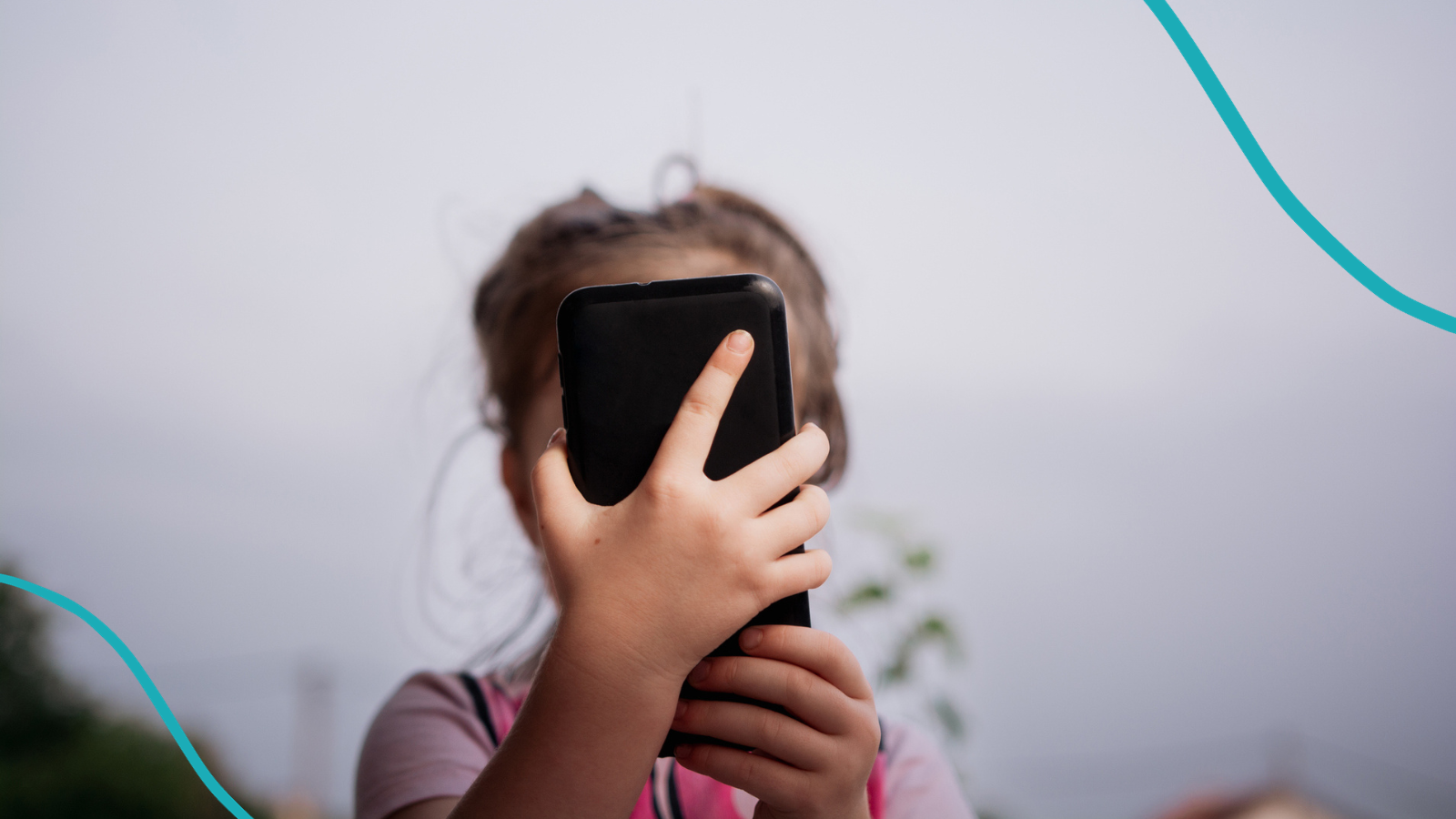While some parents are still talking about how books pose the biggest threat to children in schools, teachers are talking about what’s actually impacting their students and classrooms this year: smartphones.
This is what teachers are seeing:
- Second grade students making sexual noises in class based on “a challenge they saw on TikTok.”
- A third grader told his teacher about his “secret friend”—no one can know his name—who edits his YouTube videos for him.
- Ten-year-old boys are choosing Andrew Tate for assignments on “The Person I Admire Most.”
- A technology director for a K-9 school says his device reports show YouTube videos being played on student devices until 4 a.m.
- High school teachers report students are so addicted to their phones that turning them in results in extreme anxiety or even assault.
The kids are not OK.
Teachers of all grade levels are concerned. But you don’t have to take their word for it—studies are saying the same thing.
What’s actually happening?
It seems we can no longer talk about smartphones and social media as worrisome distractions, but as actual threats to children’s well-being. Apart from what teachers are reporting, there is research corroborating what teachers are seeing too.
1. Kids are literally addicted to what’s happening on their screens.
NPR explains it this way in their article, “Your child wants a smartphone? Read this first“:
“Smartphones, social media, and video games create large spikes in dopamine deep inside a child’s brain. As NPR has reported, those spikes pull the child’s attention to the device or app, almost like a magnet. They tell the child’s brain that this activity is super critical—way more critical than other activities that trigger smaller spikes in dopamine, such as finishing homework, helping to clean up after dinner, or even playing outside with friends.”
2. That extended time is having really troubling effects on learning, behavior, sleep, mental health, and socialization.
Increased screen time is impacting kids’ performance and behavior in the classroom. This 2018 study reports a correlation between increased screen time in children and behavioral problems, inattentiveness, and hyperactivity.
But outside of the classroom, the impact is just as worrying. The New York Times sums up the impact in their February article “The Phone in the Room”:
“By many measures, teen mental health has deteriorated, especially for girls, since about 2008. The suicide rate for girls and boys began rising around then. Feelings of loneliness and sadness began rising, too. The amount of time teenagers spend socializing in person has declined. So has sleep. “Young people are telling us that they are in crisis,” Kathleen Ethier, a top C.D.C. official, said this month when releasing the results of a large survey.”
3. Plus, the actual content they’re encountering during that screen time is disturbing.
A survey from Common Sense Media back in March showed that between 46% and 60% of girls ages 11 to 15 who use social media had been contacted by a stranger that made them feel uncomfortable.
That same survey found that 12% to 15% of girls see content related to suicide or eating disorders on a daily basis.
Sexualized content and porn are everywhere on social media apps, according to Emily Cherkin in this report by NPR. “’I [set up a test account] with Snapchat. I set up an account, pretending to be 15. Then I just went to the Discover feed, where it pushes content to you based on your age,’ she explains. Within seconds, sexualized content and vulgar images appeared, she says.”
What about responsible technology use education?
More and more schools are adopting mandatory learning units on responsible Internet use, including its dangers. While this education is crucial, it’s not enough if students walk out of the classroom to be met with unfettered Internet access.
It’s like handing a six-pack to each 16-year-old as they walk out of driver’s ed. Education can only do so much if we’re not also limiting access.
But don’t parental controls, monitoring apps, and school district filters protect kids from inappropriate content?
Long story short: not in the way some people think.
When it comes to filters, firewalls, and controls: Our tech-savvy kids know how to get around them. Here are some examples:
- Parental-control apps can notify you when an app is installed, but kids can log in to most apps via the web or through various methods of going undetected.
- If you block an app, they can find videos cross-posted on other “friendlier” apps, like Pinterest.
- They create fake accounts for their parents to follow and monitor, then save their “real” one for friends.
- School district filters are somewhat effective, but all it takes is one student to figure out the loophole and distribute the info to hundreds of their peers instantly. I know this from my own time in the classroom when I intercepted an email circulating among students for how to get around it. Just today, I searched “how to get around school district filters” and was met with over a billion results, the first of which was called “How To Bypass a School Firewall.”
But even if a child isn’t actively trying to bypass parental controls, the reality is that inappropriate content is often sent or shown to kids without their consent via email, ads, “suggested” videos, or feeds. It’s not impossible to avoid, but it’s much easier to avoid without a smartphone that is programmed to serve you more and more content based on what you click on.
What can we do about it?
When it comes to this huge and pervasive problem due to technology that is rapidly changing, we are in many ways building the plane as we fly it.
But I suspect—based on experts interviewed here and here—that these cooperative measures between schools and families would go a long way.
1. Adopt no-phone policies in schools.
I’ll start with this one since it’s the most contentious.
Ten years ago, I would have been leading the charge that phones are fine at school. I would have bragged that my students use them responsibly and put them away when asked (I might have even said that teachers who can’t control their students’ phones have a classroom management issue—yikes). I would have advocated that phones were much quicker to look up references for research than our ancient computer lab. Perhaps I might have pointed out that phones are crucial for students to have during a school shooting.
But something changed.
Over my last decade in teaching, we all saw a huge uptick in students whose mental health struggles affected their academic performance—long before COVID, but obviously after too. The lunchroom became a sea of screens. Taking up phones became more and more of a battle, until teachers eventually weren’t allowed to take up phones anymore. I saw a student cry so hard when her phone died that she started hyperventilating. And, crucially, I watched during a lockdown one day (not a drill) how quickly texts, misinformation, and rumors led to all-out panic.
Schools do need to be thoughtful about implementing sweeping policy changes like this, though. Extra personnel and space will be needed to handle the intake/outtake of phones. High school students—particularly those with after-school sports and activities—will need a way to communicate with family about schedule changes, cancellations, and transportation.
My former district made the change this year. Between parents, administrators, and teachers I’ve talked to in that district, I have yet to hear a report that isn’t glowing.
2. Reevaluate how we use district devices.
With so many students using district devices as interim smartphones, we need to be having conversations about how to keep kids safe.
Do we need to be sending home Chromebooks with elementary students?
Can we program district devices to stop Internet usage at a reasonable nighttime hour?
Do we need to rely on technology as much as we do in grades 6-12?
Do we have enough personnel and the right technology to effectively monitor student usage?
With how quickly many districts have rolled out 1:1 technology in recent years, we also have to be making time for conversation with teachers and reflecting on new research.
3. Wait on giving kids phones as long as you can.
I can’t imagine the constant pressure, stress, and second-guessing that parents of older kids must feel to get them a phone. If holding off feels like the right choice for your family, here are some things to consider:
- If you’re worried about the safety risks of not having a phone, consider the safety risks of having a phone. Encourage parents to try to remember that for every reason to get a kid a smartphone, there exists an accompanying risk. If your child feels the social sting of missing out by not having a phone, consider the negative feelings they will experience using social media. If you have safety “what-if”s of your child not having a phone, consider the safety risks we know exist for teenagers using phones.
- If you do decide to get them a phone, start “dumb.” Emily Cherkin recommends starting with a “dumbphone,” the cheeky name for a phone with only the capabilities to call and text.
I know this information is disturbing. I think it should disturb us.
But the good news is that it’s never too late to change our behavior based on new information. Luckily, this conundrum offers tons of ways we can course-correct.
Many parents—and even Gen Z adults—are swapping their smartphones for “dumbphones.”
School districts are instituting no-phone policies.
Phone addiction is very curable.
We have every ability to walk this situation back.
Of course, smartphones aren’t the only big issue affecting schools and learning. As this Harvard Graduate School of Education article suggests, a school’s discipline and culture also play a huge role in success. We need some serious overhauls to do what’s best for kids.
We just have to decide—as families and as communities—that we want to.
For more articles like this, be sure to subscribe to our newsletters.


